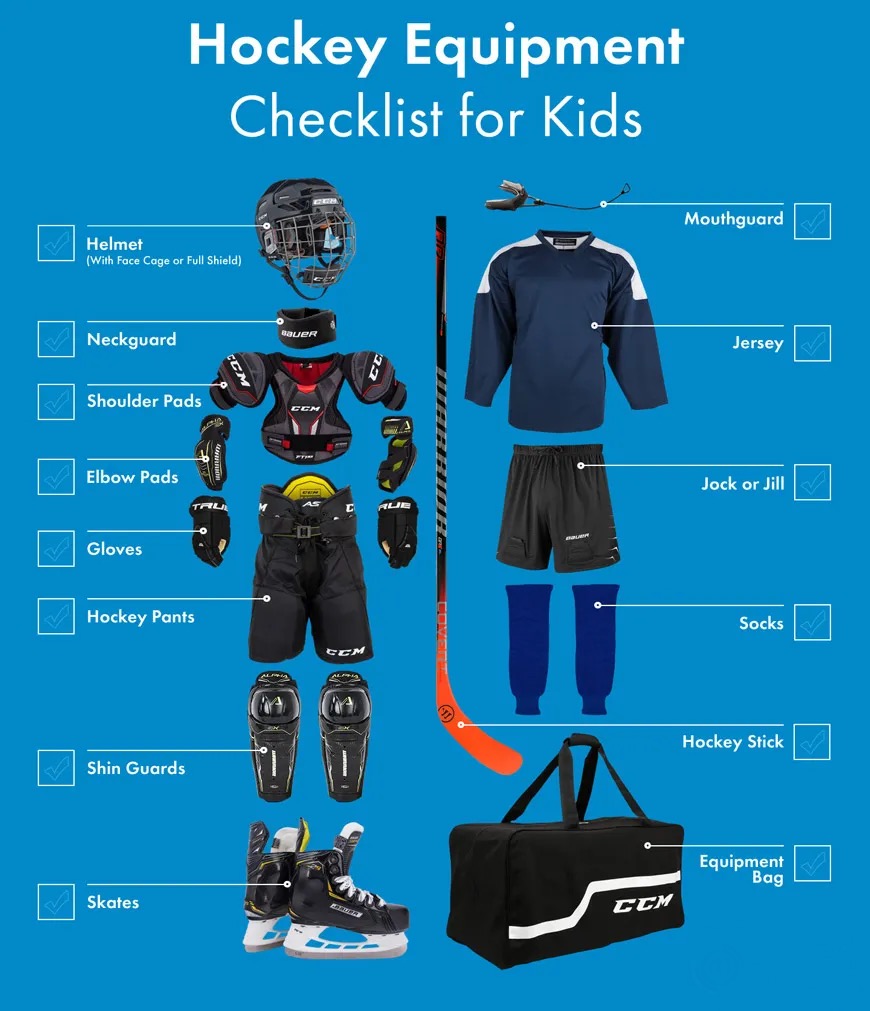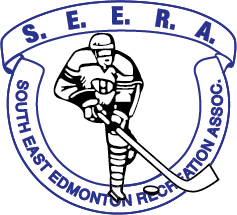First Time Hockey Parent
This is an exciting time of year for those of us who consider ourselves 'seasoned hockey parents'. But for parents entering into their first year of hockey, it can cause a little stress as well. If that is you, we want to help you navigate this exciting world so both you and your player can have an enjoyable season.
WHERE SHOULD I PURCHASE HOCKEY EQUIPMENT?
Whether you are purchasing equipment for a player or a goalie, Edmonton has many options. For new gear, Pro Hockey Life and United Sport & Cycle are excellent sources for quality gear with knowledgeable staff who can ensure your child has proper fitting equipment so they can hit the ice with confidence. You can also find quality used gear at Totem Outfitters in their Sports Exchange shop, or at Play It Again Sports.
What equipment does my player require? Here are the basics for player equipment:

Having properly fitted equipment is essential for a safe and enjoyable experience for your player. Need tips on getting your player properly fitted for equipment? Watch this Hockey Canada Equipment Fitting video for equipment fitting and maintenance information.
WHICH WAY SHOULD MY SON OR DAUGHTER SHOOT?
This is one of the questions ALL first time hockey parents wonder. To discover the answer, you have to ask this question... which hand do they use to write or colour?
It's all in the creativity
The top hand on your stick is the 'control' hand. It is the hand which makes all of the major movements and is THE hand that controls stickhandling, passing and where the puck goes when they shoot. It is the CREATIVE part of the stick so is normally controlled by the CREATIVE hand! Your child writes using the creative side of their brain which controls the opposite side of the body. The left part of the brain controls the right hand.
So if your player writes with their right hand, then their right hand should be at the top of the stick to control it. So this means your child would typically shoot LEFT!
Yes... Left. I know this sounds confusing but if you are going to buy your player a stick with a curve, then it should be a left-handed stick. But not too big of a curve! A curve too pronounced will inhibit your player from learning to stickhandle properly and make a good pass from the forehand or backhand.
Sometimes, U7 or younger players will switch sides when shooting. If you do not yet know which way your U7 child shoots, you can also try a straight blade. As the description implies, there is no curve on this type of stick. This will let them switch hands without worrying about a curve while they figure it out.
To recap: While it is not an absolute rule, typically, if your child writes their name with their right hand then they shoot LEFT. If they use their left hand then they shoot RIGHT. Ultimately, whatever feels the most comfortable when holding a stick is probably the correct way.
MY PLAYER WANTS TO BE A GOALIE??
Yay!! Without goalies, there is no hockey.
If your player is starting in U7, there are no permanent goalies so they don’t have to make any commitments to be in the net. All players will have an opportunity to play as a goalie so they can all experience the thrill of protecting the net. When they get that chance, the reactions will vary. Some will love it, while others will not want anything to do with it. It’s all part of the game.
If you are the parent of a player who gets excited about being a goalie, you may be thinking about the extra cost of goalie equipment. Fear not, SEERA Hockey has a fantastic goalie equipment program that allows players to sign out the primary gear for players registered in the U9 - U13 categories. This gear includes the chest protector, catching glove/trapper, blocker (for stick hand) and the leg pads.
CONCUSSION AWARENESS
Our players' well-being is of utmost importance to all involved with hockey. Directors, referees, coaches, players and especially parents all want our children to have fun and stay healthy.
One aspect of all minor sports, not just hockey, to finally get the attention it deserves are the problems associated with blows to the head. Coaches are teaching our players how to play without hits to the head and referees are calling penalties for anything close to the helmet. Education is key to reducing the long term effects of head injuries.
The Four R’s
- Respect for all players, especially yourself.
- Read, download and print HOCKEY CANADA'S CONCUSSION CARD and bring it with you every game and practice.
- Recognize the symptoms of concussion.
- React to it.
Prevention for Players
- Respect all players, coaches and officials.
- Make sure your hockey helmet fits and is fastened properly.
- Be aware - play heads-up hockey.
- Wear a properly fitted mouth guard.
- Always use correct body checking techniques and never hit another player from behind or in the head.
ALERT - Repeat concussions can severely affect one's lifestyle. It is a Hockey Canada Policy not to send a player back on the ice unless that player has fully recovered and has been cleared for return to play by a physician.
Coach and Safety Person Protocol
- Keep your concussion card handy.
- During the pre-game talk, check and remind players of team attitude.
- Discourage hits to the head.
- In case of injury, check for symptoms of concussion/neck and spinal injuries.
- Monitor the player for listed symptoms, if present remove the player from the game.
- Permit the player to return to play only on advice of a physician. Written approval from a physician is required for a player to return to play from a confirmed, or suspected, concussion.
- Instruct parents/guardians to inform medical personnel if it is a repeat concussion.
For more information, please check out the following concussion resources:
